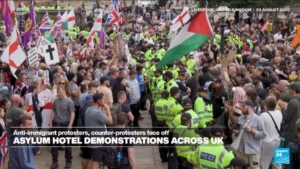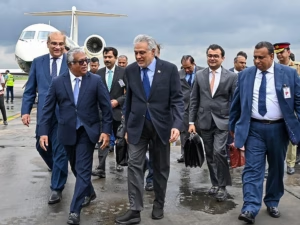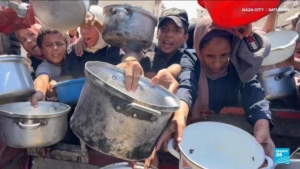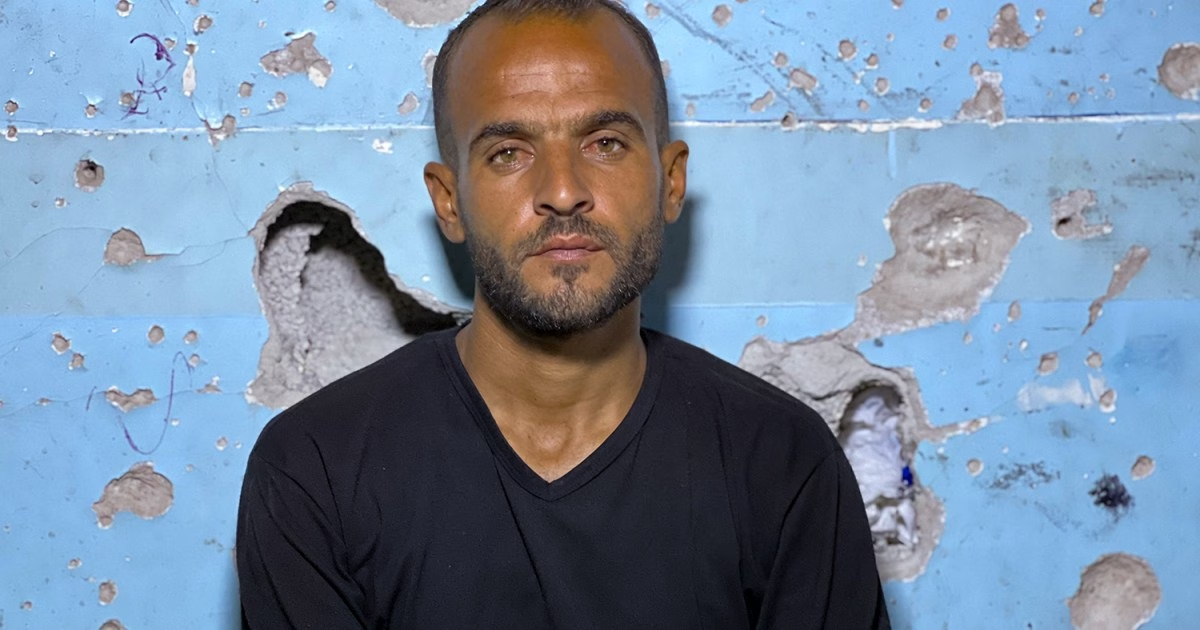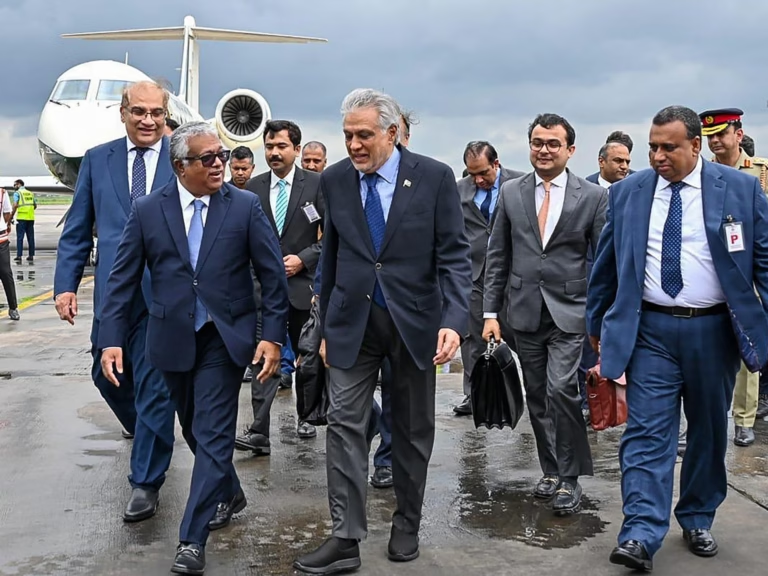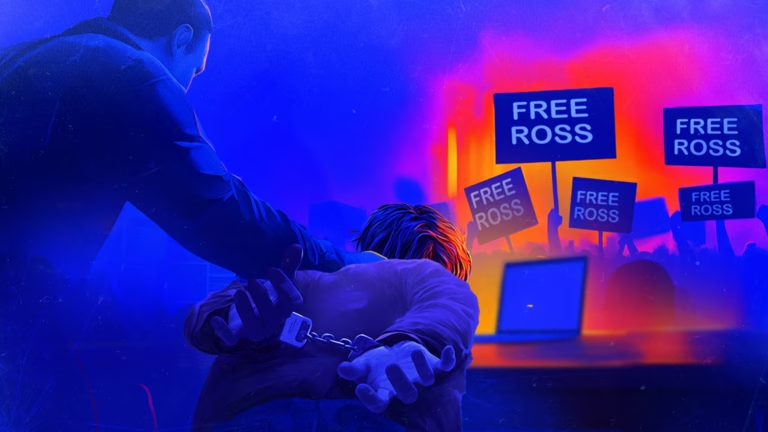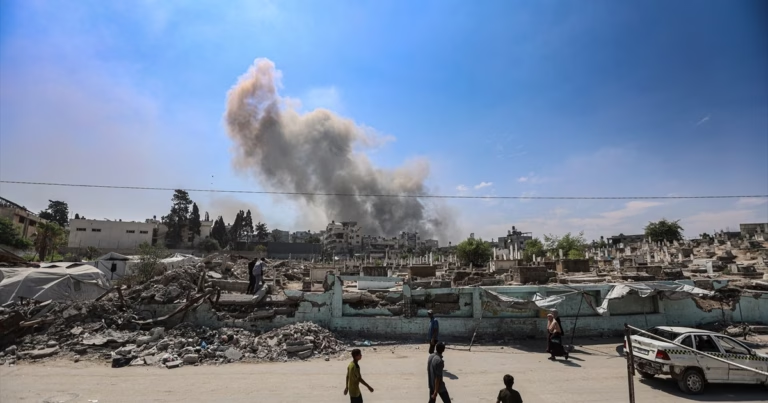Amal al-Masri, 30, recalled that at dawn, they heard Israeli tanks surrounding the school and quadcopters overhead ordering everyone to evacuate. Amal had just given birth and had not even named her baby when the tanks arrived.
Throughout the night, the area had been rocked by shelling and explosions, causing anxiety among the adults, who couldn’t sleep, and leaving the children in a state of fear and uncertainty.
Amal’s family had huddled together, with her cradling the baby and her husband Yousef holding the other children. They were all praying for safety.
Now, as morning broke, a loudspeaker on a quadcopter broadcast a male voice in Arabic, commanding everyone to leave with their IDs and hands raised.
The quadcopter fired at the buildings and dropped sound bombs, causing a panic as people scrambled to gather their belongings. Some left with nothing.
Amal, Yousef, and the children were among the first to reach the schoolyard, displaying their IDs and raising their hands. However, Yousef lost track of his father in the chaos.
The quadcopters directed the men to the school gate and the women and children to remain in the schoolyard.
The Pit
Yousef and other males over 14 were instructed to gather at the school gate in groups and approach a camera-equipped inspection passage known as “al-Halaba.”
According to Yousef, each man was ordered to approach a board with a camera; he suspected it used facial recognition. After registration, some were released, some were directed to another pit, and others underwent questioning.
Yousef spent the day in a nearby pit with about 100 other men, their hands behind their backs, as soldiers reportedly fired, tossed sound bombs, and tortured some of the detainees.

Yousef was concerned for his family’s safety, unaware of their whereabouts, which only increased his anxiety.
As evening approached, only about seven men remained in the pit. A soldier randomly selected Yousef and two others, leading them to a nearby building, where they were forbidden to speak. Throughout the night, the sound of shelling and bombing persisted.
‘Using Me for Cover’
In the early hours, Yousef and his fellow captives were woken up and forced into the streets, where soldiers used them as cover. Yousef was ordered to inspect classrooms in an empty school for hidden fighters. The soldiers followed after his “all-clear” sign. This strategy continued, with each inspected building subsequently set ablaze.
Despite the constant threat of being targeted by a quadcopter or sniper, Yousef survived each day. On the fourth day, he and a 58-year-old man were tasked with delivering evacuation leaflets.
Escape
Yousef attempted to escape by hiding in the hospital courtyard. He joined a line of men being evacuated, hoping to blend in and find safety. Soldiers instructed the evacuees to move south to Khan Younis.
As he approached the front of the line, a soldier shot him in the leg. Surrounded by shouting soldiers and potentially fatal danger, Yousef was neither killed nor detained. He received medical treatment at al-Ahli Arab Hospital.
Reuniting
Amal, with the children, had sought refuge at the New Gaza School in the west of the city. Upon hearing that Yousef was at al-Ahli Hospital, she hurried to reunite with him. The soldiers had separated families, deterring lawful escape and causing terrific distress.
Amal faced incredible difficulties with her newborn and her other children. The family finally reunited at the school, though Yousef sustained injuries and his father Jamil remained missing, reportedly taken prisoner.
